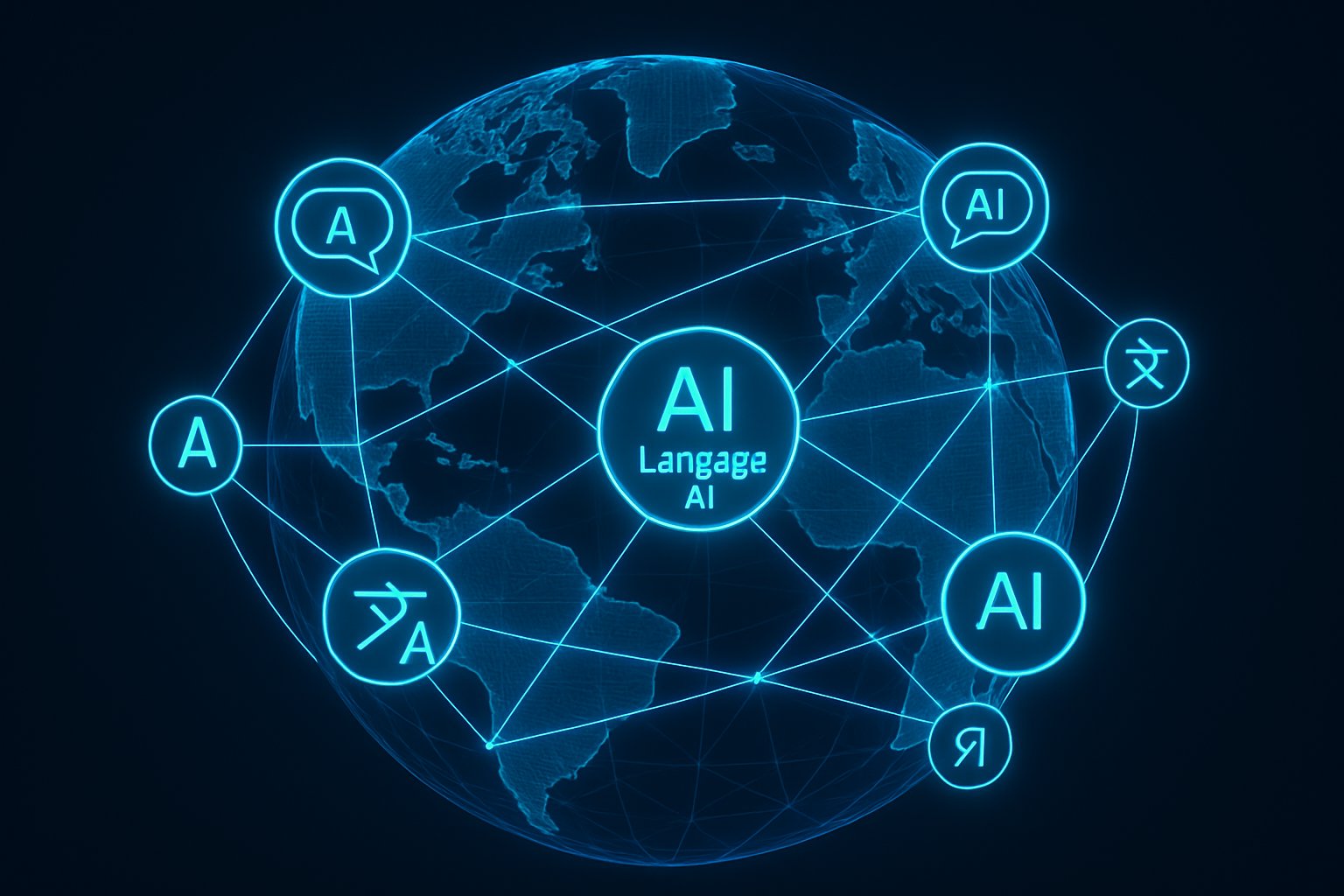
AI CERTS
3 hours ago
Language AI Propels Instant Multilingual Business Communication
Google, Microsoft, Meta, and startups tout broad language coverage. In contrast, previous systems managed dozens at best. Cost pressures, hybrid work, and customer expectations accelerate adoption. Nevertheless, quality, bias, and compliance questions persist. Businesses must grasp both upside and pitfalls. This article unpacks the market forces, players, risks, and strategic steps surrounding enterprise real-time translation.
Real-Time Shift Explained Today
Decades of incremental progress suddenly converged. Consequently, neural networks, powerful chips, and streaming architectures now enable sub-second speech pipelines. Enterprises witness Translation delivered in real time across 150 languages.

Language AI now processes audio, text, and voice synthesis within one loop. Additionally, Meta’s NLLB-200 model supplies coverage for low-resource tongues. Google and Microsoft embed similar multilingual LLMs inside cloud APIs. Subsequently, early adopters reported reduced meeting fatigue.
Latency benchmarks fall below 300 milliseconds for conversation grade interactions. In contrast, older batch systems delayed replies by seconds. Moreover, caption accuracy approaches 95% for major languages. Therefore, user acceptance has surged inside remote collaboration tools.
These performance gains redefine expectations. However, understanding market forces is essential before investment decisions.
Market Growth Drivers Today
Market analysts forecast strong double-digit expansion. Grand View Research projects machine Translation revenue to reach $2.7 billion by 2030. MarketsandMarkets predicts similar momentum for Translation Management Systems.
Furthermore, Nimdzi values the broader language services market at almost $72 billion. Language AI lowers costs, so adoption widens. Therefore, procurement budgets remain healthy despite macro uncertainty.
Three demand trends stand out.
- Hybrid work needs instant Global Communication for distributed teams.
- E-commerce platforms pursue multilingual customer acquisition.
- Accessibility mandates require live captions for compliance.
Together, Language AI drivers sustain rapid investment. Subsequently, vendors race to expand language coverage.
Leading Vendor Ecosystem Map
Several technology stacks dominate supply. Google Cloud Translation API delivers text and adaptive models across hundreds of languages. Azure Translator lists 130 language pairs for speech.
Microsoft leverages Azure Translator and embeds features inside Teams. Moreover, Meta shares research weights under its NLLB program. AWS Translate remains a significant enterprise option.
Specialist startups claim 150+ language pipelines. These challengers differentiate with speech-optimised Language AI engines trained on domain audio. Kaleo AI focuses on faith sector sermons.
- Google Cloud: 100+ real-time languages.
- Meta platforms: 200 text languages.
- Startups: 140-150 speech languages.
This ecosystem offers diverse deployment models. Nevertheless, success depends on matching tools to business scenarios.
Use Cases Transform Businesses
Contact centers integrate API calls that transcribe and translate calls instantly. Consequently, agents resolve tickets without secondary interpreters or separate Translation workflows. Vidby trials cut subtitle turnaround from days to minutes.
Remote meetings gain captions and interpreter audio in attendee languages. Additionally, sports broadcasters stream multilingual commentary to new regions, strengthening Global Communication reach. Consequently, time-to-market for campaigns shrinks.
Marketing teams automate subtitle generation for product videos. Meanwhile, on-device Language AI helps messaging apps protect user privacy.
These scenarios demonstrate tangible ROI. However, risk factors deserve equal attention.
Risks And Mitigation Steps
Accuracy gaps remain for specialized terminology. Therefore, human post-editing stays vital for legal or medical content.
Bias in multilingual models can distort gender references. Moreover, cultural nuances sometimes vanish during conversion. Independent studies reveal variable BLEU scores across dialects.
Cloud routing raises compliance challenges under GDPR. Meanwhile, Language AI pipelines may expose personal data. Data residency clauses can reduce exposure.
Voice cloning introduces consent requirements. Consequently, governance frameworks must record approvals and retention periods.
Addressing these issues protects brand trust. Next, forward-looking strategy becomes critical.
Future Outlook And Strategy
Analysts expect wider low-latency coverage by 2027. Furthermore, standards groups may publish transparent benchmarking suites.
Adaptive Language AI will allow domain fine-tuning without large datasets. Subsequently, quality should improve for niche industries.
Businesses should request per-language BLEU or human scores before contracts. Nevertheless, pilot programs remain invaluable.
Clear metrics anchor procurement choices. Finally, professionals must update personal skills.
Certification Path For Professionals
Technical leaders can validate expertise through vendor-neutral credentials. For example, professionals can enhance their expertise with the AI Developer™ certification.
Such proof signals readiness to architect Language AI pipelines that power Global Communication strategies.
Additionally, certified staff negotiate vendor claims more effectively and enforce governance controls.
Targeted learning bridges talent gaps. Therefore, organizations gain momentum in multilingual operations.
In summary, real-time Translation across 150 languages is no longer futuristic. Language AI now underpins meetings, broadcasts, and customer support. Moreover, market growth and vendor innovation promise broader Global Communication reach. Nevertheless, accuracy, bias, and privacy require vigilant mitigation. Consequently, decision makers should demand transparent metrics, run pilot tests, and engage human reviewers where stakes are high. Professionals who pursue advanced credentials strengthen internal capability and safeguard quality. Explore emerging tools and certifications to lead your organization into the multilingual era.



